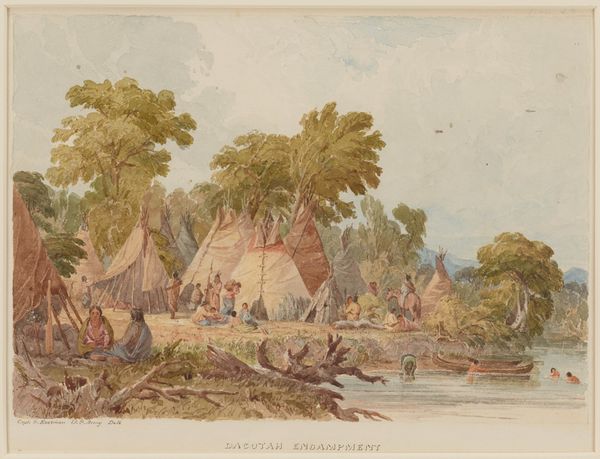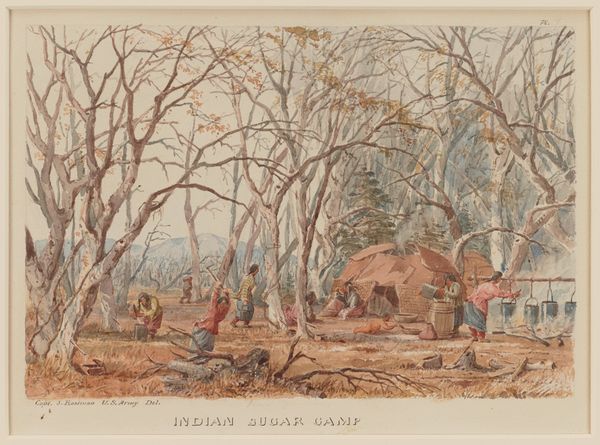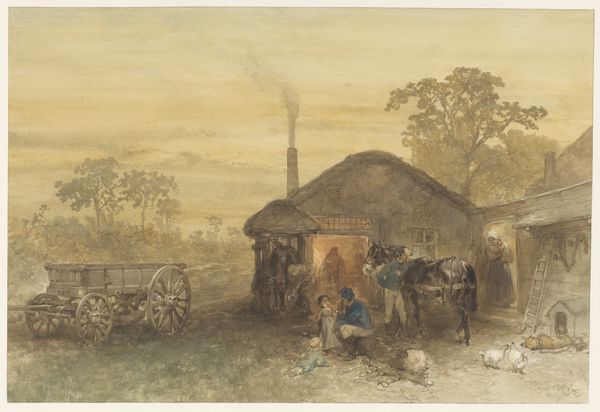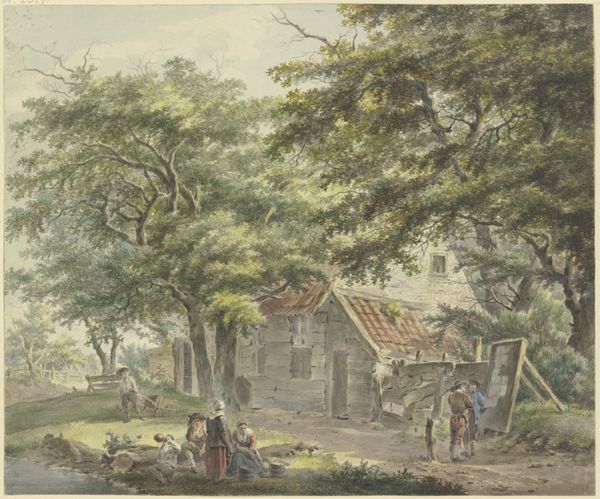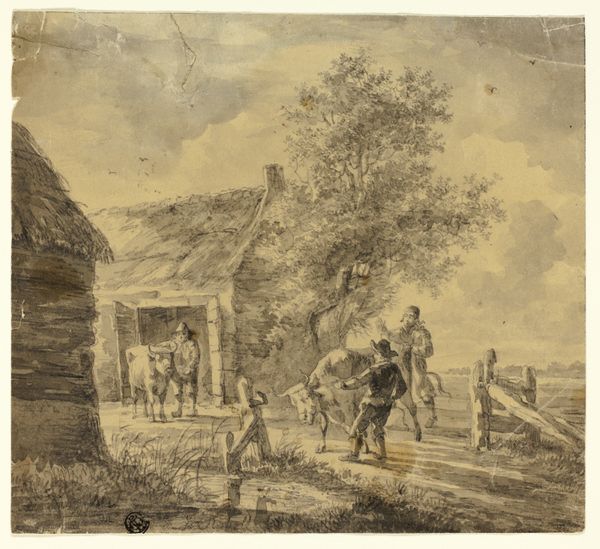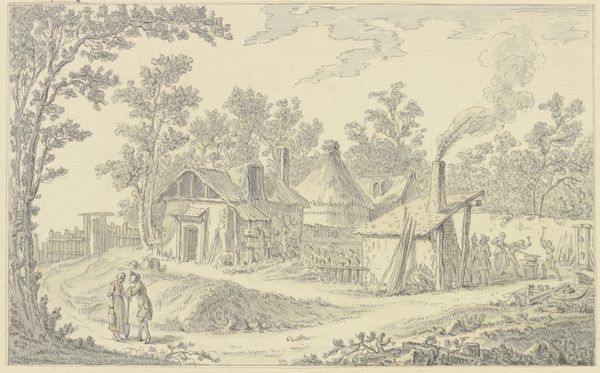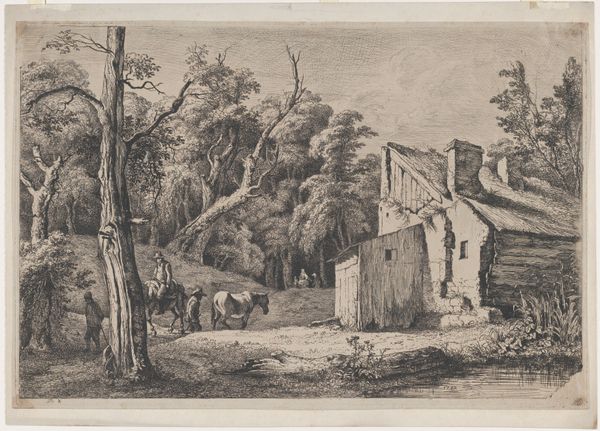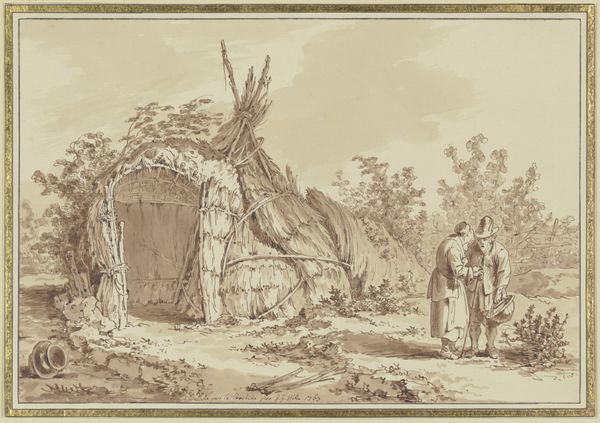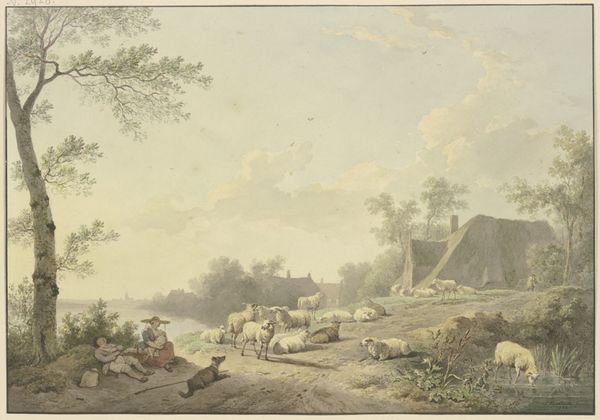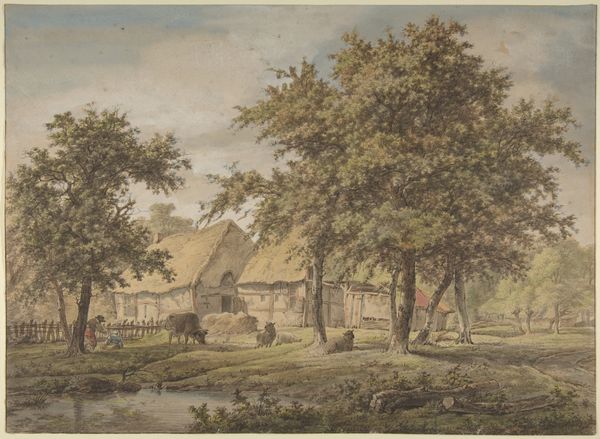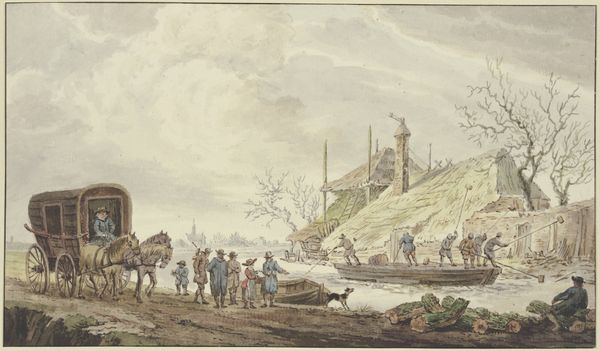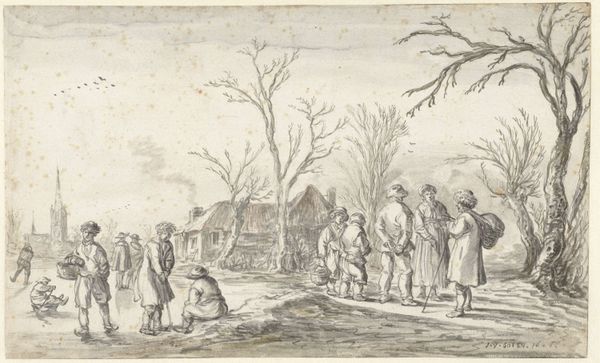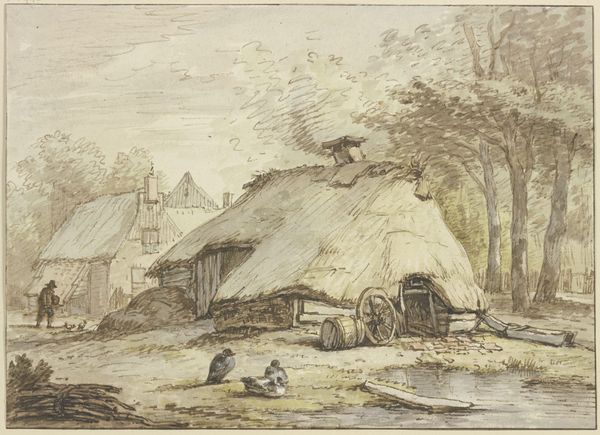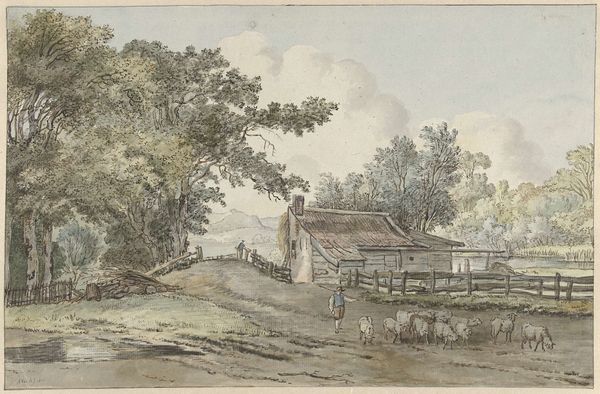
#
landscape
#
coloured pencil
#
indigenous-americas
Dimensions: 6 × 9 in. (15.2 × 22.9 cm) (image)9 13/16 × 12 13/16 in. (24.9 × 32.5 cm) (sheet)17 9/16 × 21 1/2 × 1 1/8 in. (44.6 × 54.6 × 2.9 cm) (outer frame)
Copyright: Public Domain
Seth Eastman, a West Point graduate and military officer, made this watercolor called ‘Dacotah Village.’ Eastman's career involved mapping and depicting the American West, often romanticizing or idealizing Indigenous life while serving expansionist policies. In this village scene, we see the everyday life of the Dakota people, rendered with a detached, ethnographic gaze. Though seemingly objective, the artwork is steeped in the complex politics of representation. Consider the power dynamics inherent in Eastman, a government employee, documenting a culture being actively displaced. The subtle tones and seemingly peaceful scene mask the violence of settler colonialism. How do we reconcile the aesthetic appeal of this image with its historical context? Does the act of observing and documenting inherently alter the thing being observed? This artwork invites us to reflect on the fraught relationship between representation, power, and the erasure of Indigenous histories.
Comments
minneapolisinstituteofart almost 2 years ago
⋮
The building supplies for these elm-bark lodges came from the Minnesota River Valley. The porches allowed for a bit of shade and, up top, a handy spot to dry animal skins. Settings like this are probably what convinced Captain Eastman he needed more earth tones. A receipt for paints ordered from New York dated April 11, 1842, lists tubes of “yellow ochre, Raw Sienna, Burnt Sienna, Raw umber,…Brown Ochre,” plus a red, blue, and blue-black. The total cost was $3.96. This watercolor, one of 35 works on paper by Eastman in Mia’s collection, was the basis for an illustration in Henry Rowe Schoolcraft’s massive "Historical and Statistical Information Respecting the History, Condition, and Prospects of the Indian Tribes of the United States" (Philadelphia: Lippincott, Grambo & Co., 1851-57).
Join the conversation
Join millions of artists and users on Artera today and experience the ultimate creative platform.
